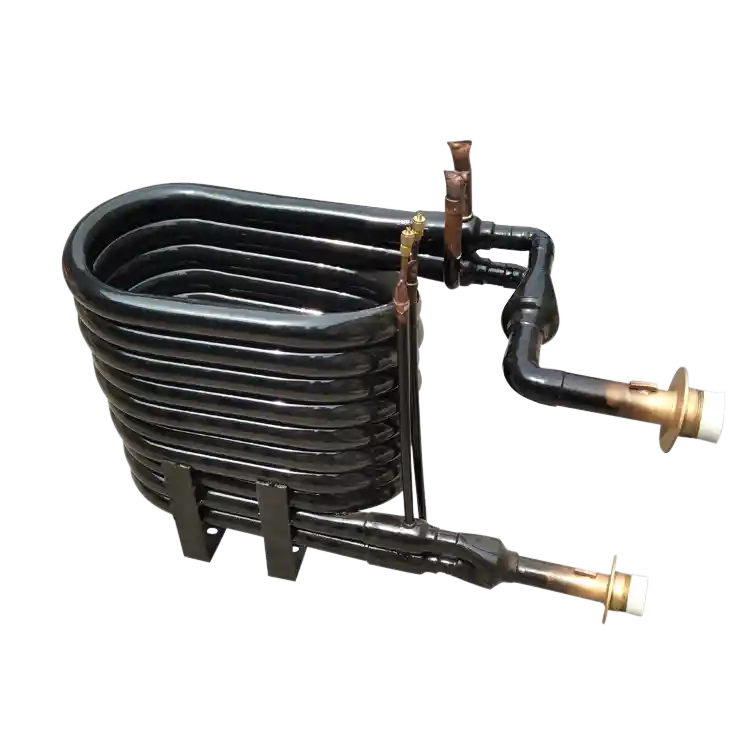Introduction
Tube forming plays a crucial role in the fabrication of coaxial heat exchangers. This article explores the various tube forming techniques utilized in the production process, highlighting their significance in shaping and optimizing the performance of these heat transfer components. By understanding the different methods, considerations, and benefits of tube forming, manufacturers can enhance the efficiency and effectiveness of coaxial heat exchangers.
1. The Importance of Tube Forming
Tube forming involves shaping tubes into specific configurations to meet the requirements of coaxial heat exchangers. It affects the flow dynamics, heat transfer efficiency, and overall functionality of the heat exchanger. This section discusses the importance and benefits of tube forming in coaxial heat exchanger fabrication.
1.1 Enhanced Heat Transfer Efficiency
By utilizing tube forming techniques, the internal surface area of the tubes can be increased, leading to improved heat transfer efficiency. The formed tubes allow for greater contact between the fluid and the tube wall, facilitating efficient heat exchange.
1.2 Compact Design
Tube forming enables the creation of compact heat exchanger designs by maximizing the use of available space. Through various forming methods, such as bending and coiling, the tubes can be arranged in a way that optimizes the heat exchanger’s footprint without compromising performance.
1.3 Customizable Configurations
Tube forming provides flexibility in creating custom configurations to meet specific application requirements. The ability to bend, shape, and manipulate the tubes allows for the adaptation of coaxial heat exchangers to fit various installation spaces and accommodate specific fluid flow patterns.
2. Tube Forming Techniques
Different tube forming techniques are employed based on the desired shape, material, and production requirements. This section explores several commonly used tube forming techniques in coaxial heat exchanger fabrication.
2.1 Bending
Bending is a widely used tube forming technique that involves applying force to the tube to achieve specific angles or curves. The bending process can be performed using various methods, including:
2.1.1 Mandrel Bending
Mandrel bending utilizes a mandrel—a solid rod or flexible wire—inserted into the tube to prevent deformation during bending. This technique ensures consistent tube shape and minimizes wrinkling or collapse.
2.1.2 Rotary Draw Bending
Rotary draw bending employs a mandrel and a rotating draw die to control the tube’s curvature. The tube is pulled around the die while the mandrel supports the inner wall, resulting in precise bending without distortion.
2.2 Coiling
Coiling involves winding the tube into a spiral or helical shape. This technique allows for compact heat exchanger designs and increased heat transfer surface area. Coiling can be achieved using:
2.2.1 Single-Layer Coiling
Single-layer coiling forms a continuous spiral by wrapping the tube around a central axis. This technique provides a uniform coil diameter and is suitable for applications where space is limited.
2.2.2 Multi-Layer Coiling
Multi-layer coiling involves wrapping multiple layers of tubes in a helical pattern. This technique increases the heat transfer surface area while maintaining a compact design. It is commonly used in high-performance heat exchangers.
2.3 Expansion
Expansion refers to the process of enlarging the tube’s diameter to achieve a snug fit with other components or connections. It improves the mechanical integrity and ensures efficient fluid flow within the coaxial heat exchanger. Expansion techniques include:
2.3.1 Hydraulic Expansion
Hydraulic expansion utilizes hydraulic pressure to expand the tube’s diameter. The tube is inserted into a die or sleeve, and high-pressure fluid is applied to expand the tube uniformly, creating a tight joint.
2.3.2 Mechanical Expansion
Mechanical expansion involves using mechanical force, such as a roller or expander tool, to expand the tube. This technique is suitable for both small and large diameter tubes and offers precise control over the expansion process.
3. Considerations for Tube Forming
Successful tube forming requires careful consideration of various factors to ensure optimal results. This section discusses key considerations that manufacturers should keep in mind during the tube forming process.
3.1 Tube Material
The choice of tube material influences the selection of tube forming techniques. Each material may have specific properties that affect its formability and the feasibility of certain forming methods. Common tube materials for coaxial heat exchangers include stainless steel, copper, and titanium.
3.2 Wall Thickness
The wall thickness of the tube impacts its formability. Thicker walls may require more force and specialized equipment for successful forming, while thinner walls may be more prone to deformation. Proper wall thickness selection is crucial to maintain the structural integrity of the tubes.
3.3 Equipment and Tooling
Selecting the appropriate equipment and tooling is vital for achieving accurate and consistent tube forming. Factors such as machine capabilities, tooling design, and precision control mechanisms play a significant role in ensuring the desired tube shape and dimensions.
3.4 Production Volume
The desired production volume influences the choice of tube forming techniques. High-volume production may require automated or specialized machinery to streamline the forming process, while low-volume production allows for more manual or customized approaches.
Conclusion
Tube forming is a critical step in the production process of coaxial heat exchangers. By utilizing various techniques such as bending, coiling, and expansion, manufacturers can achieve custom shapes, enhance heat transfer efficiency, and optimize the design of these heat transfer components. Considering factors such as tube material, wall thickness, equipment, and production volume is essential to ensure successful tube forming. With a deep understanding of tube forming techniques and their considerations, manufacturers can produce high-quality coaxial heat exchangers that meet the demands of diverse applications.


